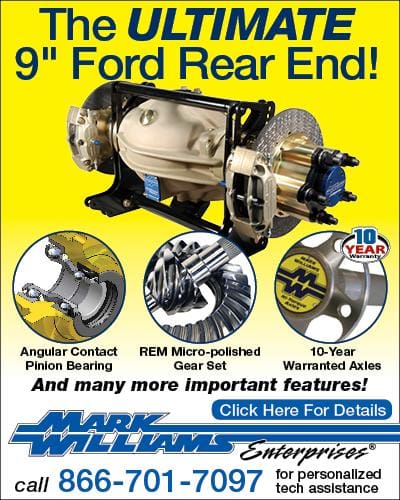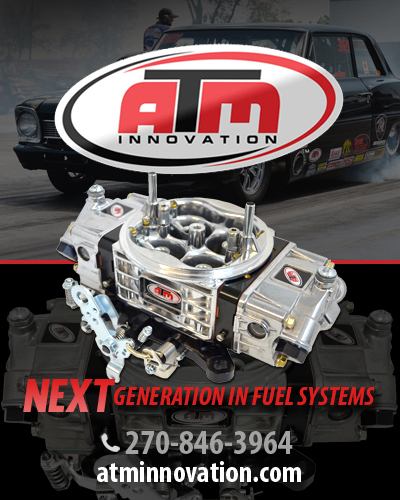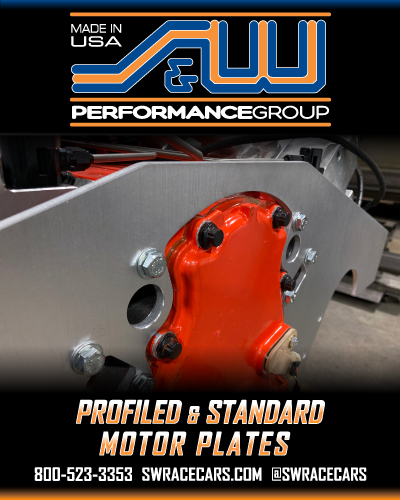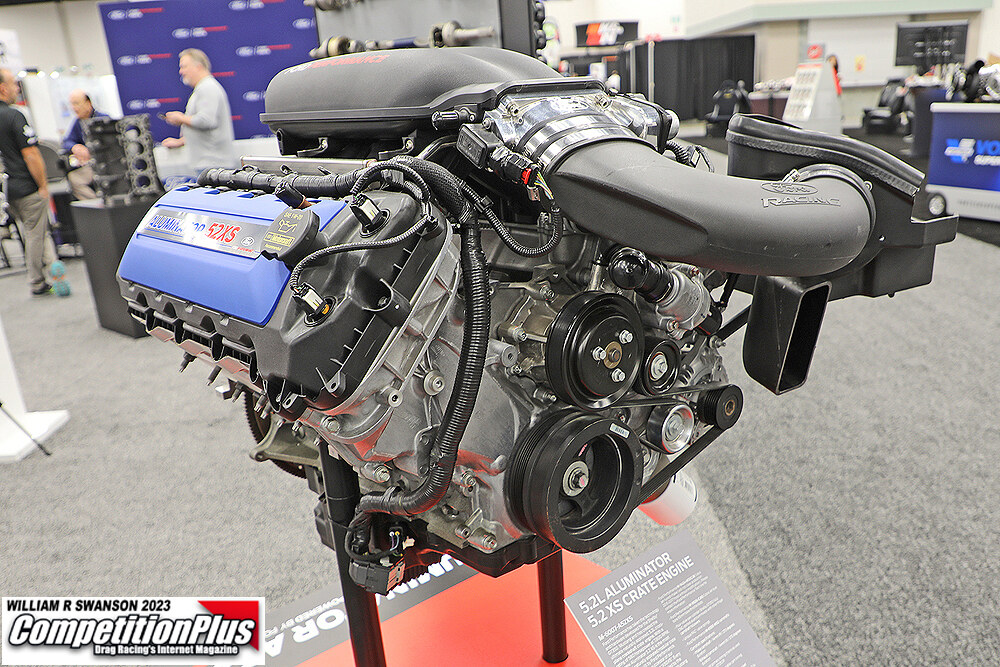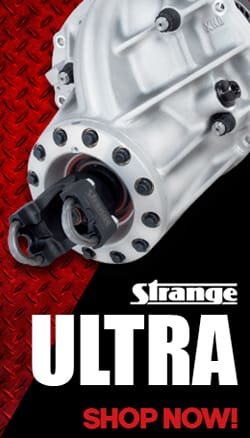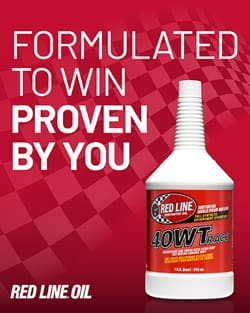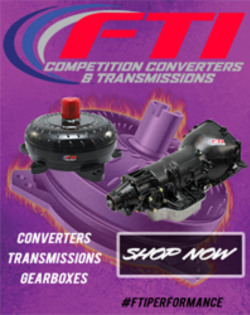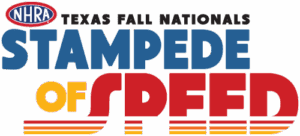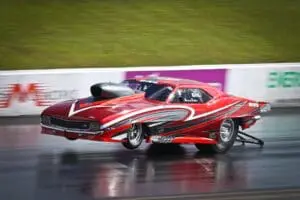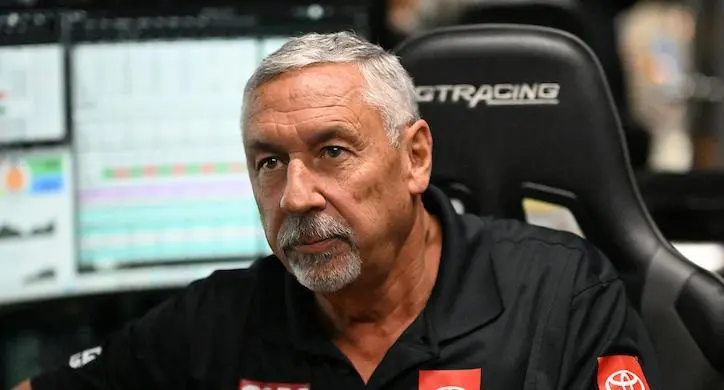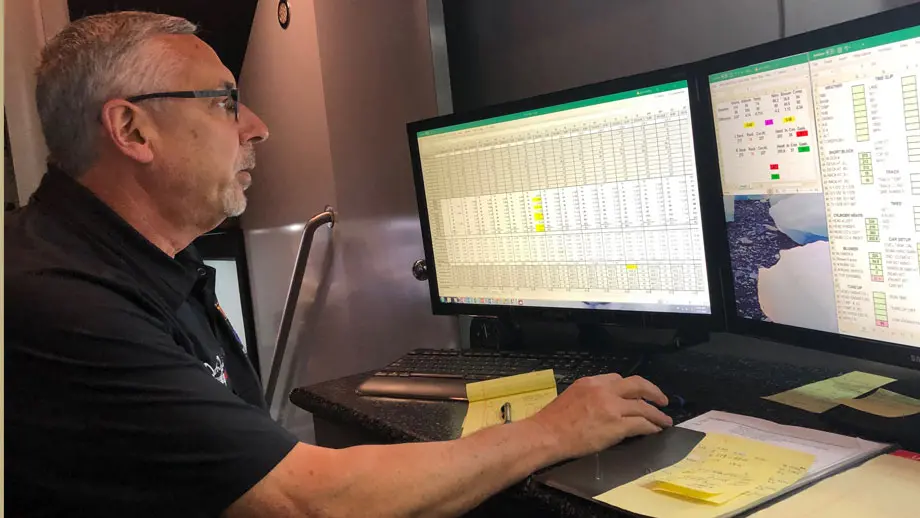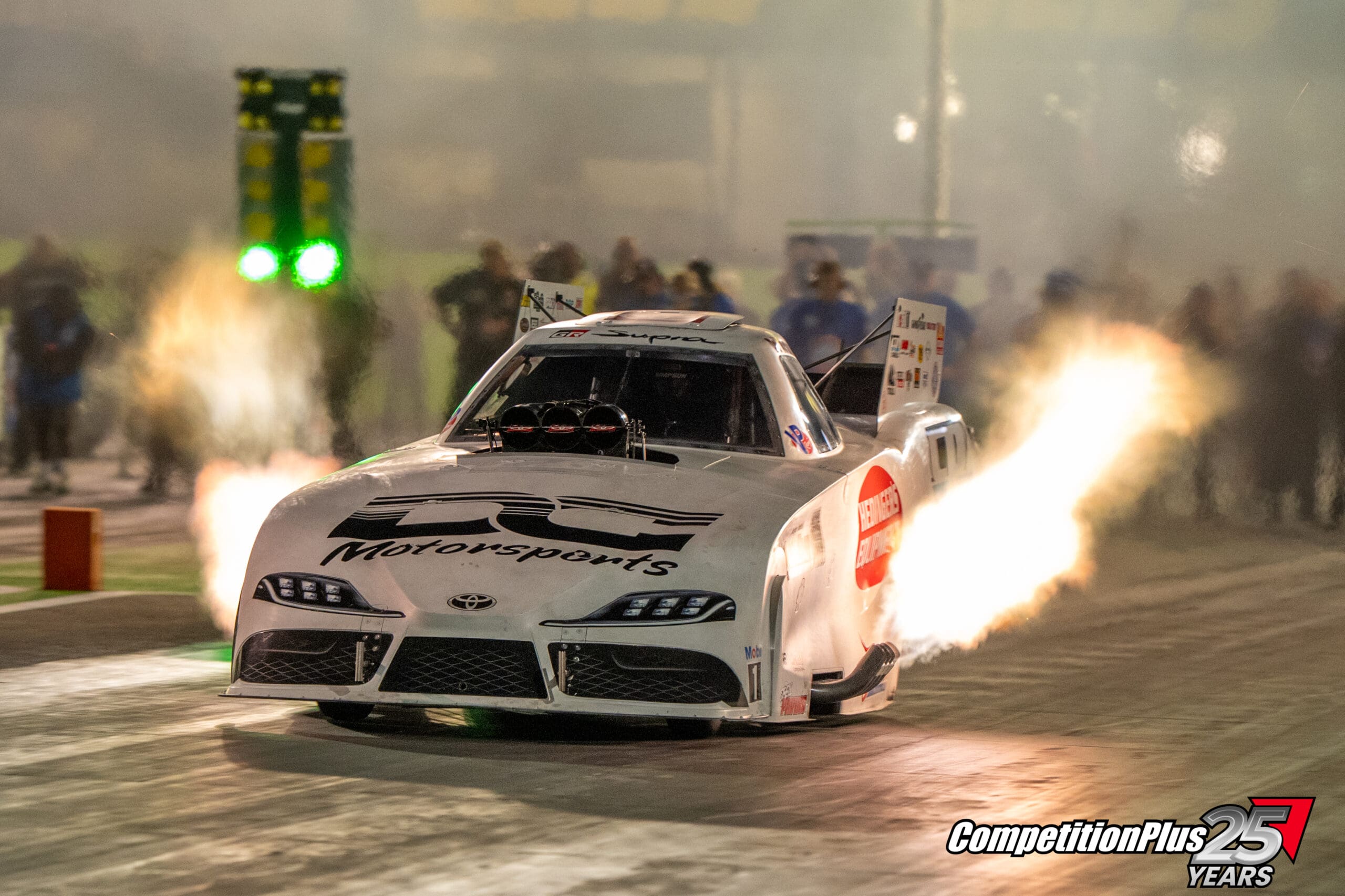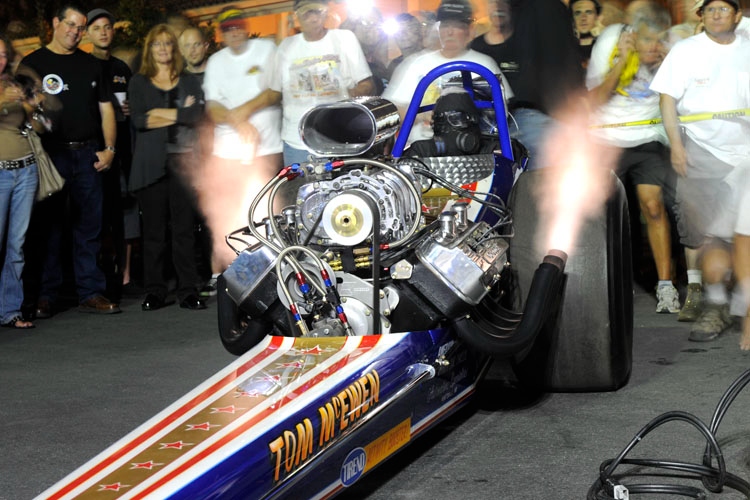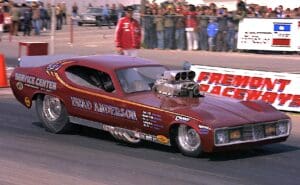The Bridge Between the Pro and Sportsman Ranks Served Its Purpose …

Pro Comp eliminator had all the makings of a marriage that was doomed from the start.
The Pro Comp concept had all the makings of a great concept on paper, but in reality the classification is one that became
antiquated the moment the 1974 season began.
Pro Comp was a star destined to shine, a bridge covering the colossal gap which existed between sportsman racing and the nitro-burning division.
The semi-professional division was actually a salve to ease the sting of losing Top Gas eliminator earlier in the season while elevating many of the “overqualified” Comp eliminator entries.
Pro Comp featured a mix of the “everything to everybody” nature of sportsman drag racing with the cutthroat nature of professional racing’s heads up pro-tree format. Maybe cutthroat didn’t describe the nature of its followers, but it described the level of competition to a tee.
The first full year of Pro Comp contained six different combinations such as AA/Dragster (today’s Blown Alcohol Dragster), A/Fuel Dragster (Injected Nitro), B/Fuel Dragster (another variation of injected nitro), BB/Funny Car (today’s Top Alcohol Funny Car), A/Funny Car (Injected Nitro) and AA/Altered (Blown Alcohol Altered).
This approach suited Dale Armstrong, who was nicknamed AA/Dale Armstrong by his peers, and he excelled to the point that he’s recognized as the winningest driver to ever compete in Pro Comp with 12 national event victories between 1974 until he went fuel racing in 1980.
Armstrong remembered the day when then Division Director and Chief NHRA Announcer Bernie Partridge conveyed the news of Pro Comp prior to the 1974 tour. The timing, Armstrong adds, couldn’t have been any better.
Creating that class changed my life. I thanked Bernie Partridge many times. I can still think back to that day [a formative meeting at the Double Tree hotel in Buena Park, Ca.] when Bernie said, ‘I really think there are a few guys in here that this class is going to make heroes out of. – Ken Veney

“It was very good for us,” Armstrong told CompetitionPlus.com in an archived interview. “There were a bunch of us running these kinds of cars but no place to run them because the NHRA didn’t have any classes for us. Because we ran this combination all over, once the NHRA announced the class, we – and I mean guys like myself, Ken Veney, Wilfred Boutilier and Brad Anderson already had a good head-start.
Armstrong quickly found out there were some East Coast hitters who were their equivalent, namely one Ken Veney. The two eventually paired up and became an axis of evil to those who hoped to beat them.
They won races the old fashioned way – by hard work, intelligent decisions and having fun in the process. At least that’s how Armstrong described it.
“I think Dale is partly right in his assessment,” Veney agreed, somewhat. “We were younger and worked more, although it didn’t really seem like work.”
Veney continued in the archived interview, “The only exception was that a few of us put in unreal hours and because of that we gained an incredible amount of satisfaction out of everything. We didn’t have to get a lot of money out of it to gather a great deal of satisfaction from the experience.”

Satisfaction was one thing, experience was clearly another. Both Armstrong and Veney were able to glean massive amounts of knowledge which would affect them both in their eventual progression into the nitro ranks.
“Creating that class changed my life,” admitted Veney. “I thanked Bernie Partridge many times. I can still think back to that day [a formative meeting at the Double Tree hotel in Buena Park, Ca.] when Bernie said, ‘I really think there are a few guys in here that this class is going to make heroes out of.”
Patridge’s comments were directed to Armstrong, Veney and West Coast hitter Brad Anderson, something he had to let them know at the conclusion of the meeting. The notion had flown over their heads because they just wanted to race and if they became stars, that status would be an added bonus.
“He had the foresight to see that,” Veney added. “Look at the three of us and you tell me.”

Current Top Alcohol dragster and fellow Pro Comp pioneer Len Cottrell estimates he’s approaching his 49th year in drag racing and he was there during the inaugural and pre-inaugural Pro Comp seasons. He had a front row seat to the kind of competition that Armstrong and Veney brought to the table.
“Dale Armstrong was a vicious competitor,” Cottrell recalled. “But to be honest I looked forward to racing both he and Ken Veney. I didn’t care if the West Coast guys were coming because it provided a lot of credibility to the class and the races. If you were able to go a couple of rounds and make it into the semis or the finals You were definitely racing the best and knew you were doing good.
“The reality is the more we raced them, the less we became intimidated by them.”
This intimidation, Cottrell added, didn’t limit itself to NHRA competition only. The IHRA and AHRA also contested Pro Comp and Veney and Armstrong made stops at those races too.
“The 1976 season was the last season we ran with the IHRA … and I had John Speelman driving for me … we were dominant and we won quite a bit wherever we went but there was one guy who took us out every time we raced and that was Dale Armstrong. We just couldn’t get around him.”
Cottrell had company in that department as Armstrong won two of the four IHRA Pro Comp championships including that inaugural 1976 season.
The first NHRA Pro Comp race was actually contested during the 1973 NHRA Supernationals in Ontario, Ca, with Don Enriquez knocking off Veney’s injected-nitro flopper in the final round. His winning elapsed time was a 7.02, in an era when the six-second barrier was untouched by those in Pro Comp.
NHRA PRO COMP NATIONAL EVENT WINNERS
* Dale Armstrong – 12
* Billy Williams – 11
* Ken Veney – 9
* Dave Settles – 4
* Dale Hall – 3
* Brian Raymer – 3
* Joe Amato – 2
* Wilfred Boutilier – 2
* Don Enriquez – 2
* Jimmy Scott – 2
* Joey Severence – 2
* Jim Archer – 1
* Ron Boggs – 1
* Brett Bramley – 1
* Williard Buff – 1
* Wayne Clapp – 1
* Kenny Cook – 1
* Don Geradot – 1
* Bogie Kell – 1
* Frank Manzo – 1
* Derry O’Donovan – 1
* Joe Ortega – 1
* Chet Rickard – 1
* Tom Ridings – 1
* John Samolyk – 1
* Kevin Seibert – 1
* A.J. Seruntine – 1
* Walt Weney – 1
* Don Woosley – 1

The first six-second run in Pro Comp was by a driver who many categorized as a free spirit. Wilfred Boutilier pulled off the feat when he ran a 6.98 at an NHRA points race in Irwindale, Ca.
Boutilier campaigned one of the BB/Funny Cars in competition and answered to the nickname Wild Wilfred.
The Dawsonville, Ga.-based Pro Comp icon left drag racing when the division was split at the conclusion of the 1980 season and went on to open a successful racing oriented machine shop.
Clearly the BB/Funny Cars of the era were a fan favorite although they didn’t always lend the best opportunity to win.
Boutilier made a name for himself by keeping the fans entertained.

“I think it was very fun in the beginning,” Boutilier said in an archived interview. “It was a little more down to earth than it is now. A lot of those from back in the day see it the same way. The biggest drawback for the NHRA was in maintaining parity for the different combinations.
“Those dragsters would kill us out of the gate. The clutches in our cars just weren’t as advanced back then. They would squirt out on us about 35 – 40 feet into the run. We jacked around with the transmissions in an attempt to try and catch them. It didn’t matter it was still a bunch of fun.”
Boutilier qualified No. 1 at the 1974 Pomona event but the final ended up with Armstrong topping Veney. Both finalists ran different combinations than they had in the 1973 exhibition.
Team Veney [including Armstrong] became the masters at racing the rulebook. If a combination was given a favorable weight to cubic inches ratio, they’d show up at the next race with that.
Boutilier was quick to point out the technology ground zero began that first year in Pro Comp and advanced from that point, adding the largest early supercharger was a 6.71 and that grew to an 8.71 by 1980.

A lot of those technological finds were discovered when switching classes within the eliminator.
Veney and Armstrong had multiple cars and combinations in anticipation of the ever-changing rules.
“There were a few of us that raced Pro Comp nationally,” Armstrong said. “You had to be versatile. The first real car I ever drove was Ken’s injected nitro dragster and then I jumped over to his blown alcohol flop and won Pomona with that car. As the weight breaks would change, he [Veney] could change the car he raced. I went on to build my own BB/FC and when that car was no longer competitive, I went with the dragster.”
Armstrong recalled the weight breaks often changed on a weekly basis based on the previous week’s race.
“It jumped around so much that one race weekend, I ended up putting a Model T body on the Funny Car chassis,” Armstrong admitted.

Cottrell remembered the 1974 NHRA Gatornationals vividly because Veney brought a pair of Vega Funny Cars, one with a supercharged alcohol-burning engine and the other with the injected nitro combination.
“Veney drove one and Armstrong drove the other,” Cottrell added.
Pro Comp brought out the ingenuity in more than just the Veney/Armstrong duo as Cottrell conveyed. He recalled in the early 1980s at Indy when Tom Conway competed with three different combinations in the same dragster.
“He had a supercharged alcohol engine which competed at one weight break,” Cottrell explained. “Then he’d put an injected nitro motor in it and ran at a different weight break. Then he put a large displacement wedge motor in the car and this was during the same race. He had three days of qualifying and ran one on each day. Whichever combination was the best was the one he would run on race day.
“That’s how crazy it got,” Cottrell added.

It was only fitting that current Top Alcohol Funny Car champion Frank Manzo was part of those early days and he pulled off one of the switcheroos that Veney and Armstrong made famous by embarking first on a BB/FC and later switching over to AA/A supercharged alcohol roadster. This was achieved by taking the Monza body off of the chassis and replacing it with a roadster body.
The ride was clearly one step below a fuel altered and quite the monster to tame.
“We bolted a wing on the roof and even if we didn’t go far in eliminations, the car was so wild that it always got ink and coverage,” Manzo said in an archived interview. NHRA liked the car and I enjoyed driving it. It gave me the best opportunity to switch between the classes.”
The between rounds maintenance was drastically different then when compared to today’s complex Top Alcohol climate.
“You’d come back from a run and adjust the valves and cool the clutch,” Manzo recalled. “It really wasn’t a lot of work when compared to today. We were lucky that in the early days the parts didn’t cost as much.
Just ask any Top Alcohol racer of today and while they will likely tell you that Pro Comp was great back in the day, such a move to return to the roots of the eliminator wouldn’t be practical in today’s drag racing. Pro Comp was eventually split into seperate divisions in 1981 and still retained a resemblance of Pro Comp until 1983, when the separation became a divorce.
“It just comes down to dollars and cents,” Cottrell admits. “Even with my car, we are still at a major disadvantage because we run supercharged alcohol. The injected-nitro cars are easily generating 300 more horsepower. I just don’t think we’ll ever be able to close that gap.
“The same holds true between the Funny Cars and the dragsters. The dragsters are a half-tenth quicker than the Funny Cars. If you tried to reinstate Pro Comp, I think the disparities are too much and I don’t think the NHRA would want to start handicapping again. It would come out immediately with a severe inequity.
“Pro Comp was in a different element of time with a different kind of cost.”













